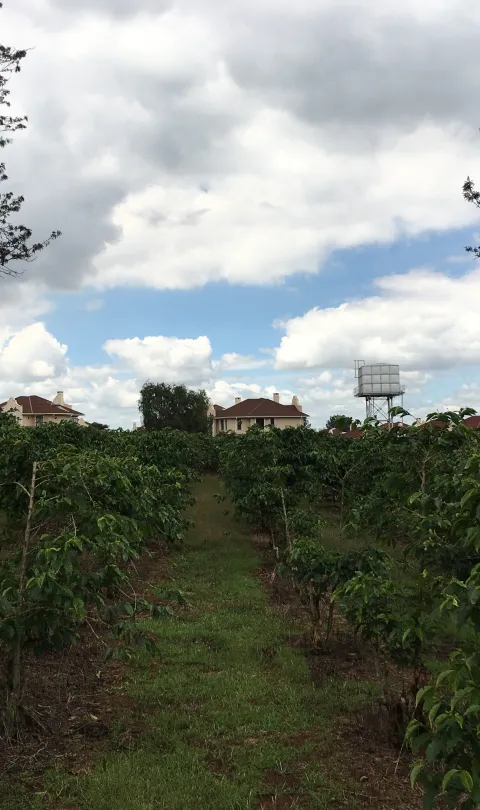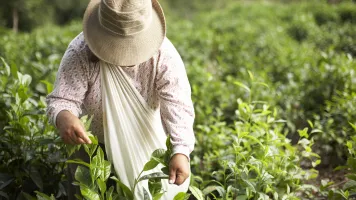The “50 X 2030” initiative, launched this week on the sidelines of the United Nations General Assembly, is a multi-stakeholder effort to help end hunger and achieve Sustainable Development Goals (SDG) 2. The ambitious plan commits to conduct regular surveys of farming households in 50 low and lower-middle income countries—and then make the data, combined with other information sources, widely available.
Key partners on the initiative include the Bill & Melinda Gates Foundation, the United States Agency for International Development (USAID), the Government of Australia’s Department of Foreign Affairs and Trade (DFAT), the Government of Germany’s Ministry for Economic Cooperation and Development (BMZ), the World Bank, the United Nations Food and Agriculture Organization (FAO), the Global Donor Platform for Rural Development, and the governments of Ghana, Sierra Leone, and Kenya
The commitment, likely to be the largest ever investment in collecting data for agricultural development, comes in the wake of new alarming numbers that hunger levels have risen for three consecutive years. It sends a signal that the development community is committed to ensuring its interventions lead to results, and positions the agriculture sector as a leader in this regard.
Better data is desperately needed for agriculture and beyond
Recent assessments of available agriculture data show that, in sub-Saharan Africa in particular, basic statistics from the farm sector are often incomplete or unreliable. Only two out of 44 countries in the region are deemed to have high-quality agriculture data. For example, in 2006, there were three competing estimates of maize yields per hectare in Malawi. In Tanzania, estimates of maize yields indicated they had plummeted from 3,000 kilos per hectare in 2001 to 755 in 2003, but with no indication of why they dropped so precipitously. Such confusion can leave the many different players in the sector—including governments, donors, and agribusinesses – unsure about where to devote their resources, as evidence pointing to either problems or opportunities is either unavailable or unreliable. Without these foundational data, it will be next to impossible to meet the targets set out in SDG 2, which aims to end hunger and all forms of malnutrition by 2030.
The challenges in agriculture are not unique. Across the 17 SDGs, there are significant data gaps and limitations leaving many governments to plan and set policy in the dark. And the problem is not going away. The increased demand for data to implement and monitor the 2030 Agenda has not been met with commensurate investment in even basic data systems and capacities. In a recent paper, we highlighted some of the possible reasons for this. When faced with difficult trade-offs, decision-makers will often prioritize investments that have more immediate impact than the slow and difficult work of strengthening data systems and capacities. And, it doesn’t help that decision-makers often have a poor understanding of the value of data. We also found that a good data story with a clear human connection is the most persuasive in proving the value of data.
Launching case studies on the value of investing in data
To help build the evidence base on the value of investing in data, we engaged with TReNDS – the data and statistics thematic group of the Sustainable Development Solutions Network, to produce a series of case studies looking at the impact of better data and digging into the return on investment.
Today, we’re pleased to launch the first five case studies. They include:
- A project implemented by BRAC that invested in local censuses, social mapping, and real-time data sharing to better target pre and post-natal care to slum dwellers in Bangladesh, resulting in a significant decline in maternal deaths;
- An effort led by BudgIT to improve government budget transparency in Nigeria by making budget data more accessible and understandable to the public, ultimately exposing substantial waste and over-expenditure;
- An analysis of the economic impact on the US and global economies of the Landsat program’s decades-long investment in Earth observation data;
- Use of mobile technology to improve the coverage, timeliness, and reliability of health data in Uganda to address drug stockouts and track disease outbreaks; and
- A new method to model crime risk in one of America’s most dangerous cities, resulting in more efficient allocation of police resources and a marked decline in crime.
A clear message coming out of all the cases is that strengthening data can have a significant impact. Specifically, investing in data systems, capacities, technologies, and processes is relatively inexpensive, and often leads to long-term cost efficiencies as well as sustained social impacts and positive development outcomes.
We’re looking forward to releasing five more case studies in mid-October in conjunction with the World Data Forum, and we’ll be adding additional content online including personal stories and audio clips from the people involved in the cases, so check back often!
What’s next?
We will work with our partners, particularly from the High-Level Group for Partnership, Coordination and Capacity Building for Statistics and the GPSDD financing expert group, to use these case studies in our advocacy for more and better financing for data. The commitment to invest in agriculture statistics that was announced today is an important start, but cannot be the end.
Building on the good advice and expertise of our partners, we will distill common lessons and any particular indicators from the cases that could help inform future data investments to maximize benefits and ensure that limited resources are being deployed as effectively as possible.
We want to amplify more stories. It wasn’t easy to find cases that are well documented and verified with clear and reliable evidence on the return on investment. The practitioners that are implementing these projects are often too busy getting on with it to step back and analyze. They see the value of data plainly, but often don’t have time to tell the story. But, we need to build this body of evidence to convince the unconvinced, and that’s where the Global Partnership for Sustainable Development Data can help. Please reach out if you have a story to share.

